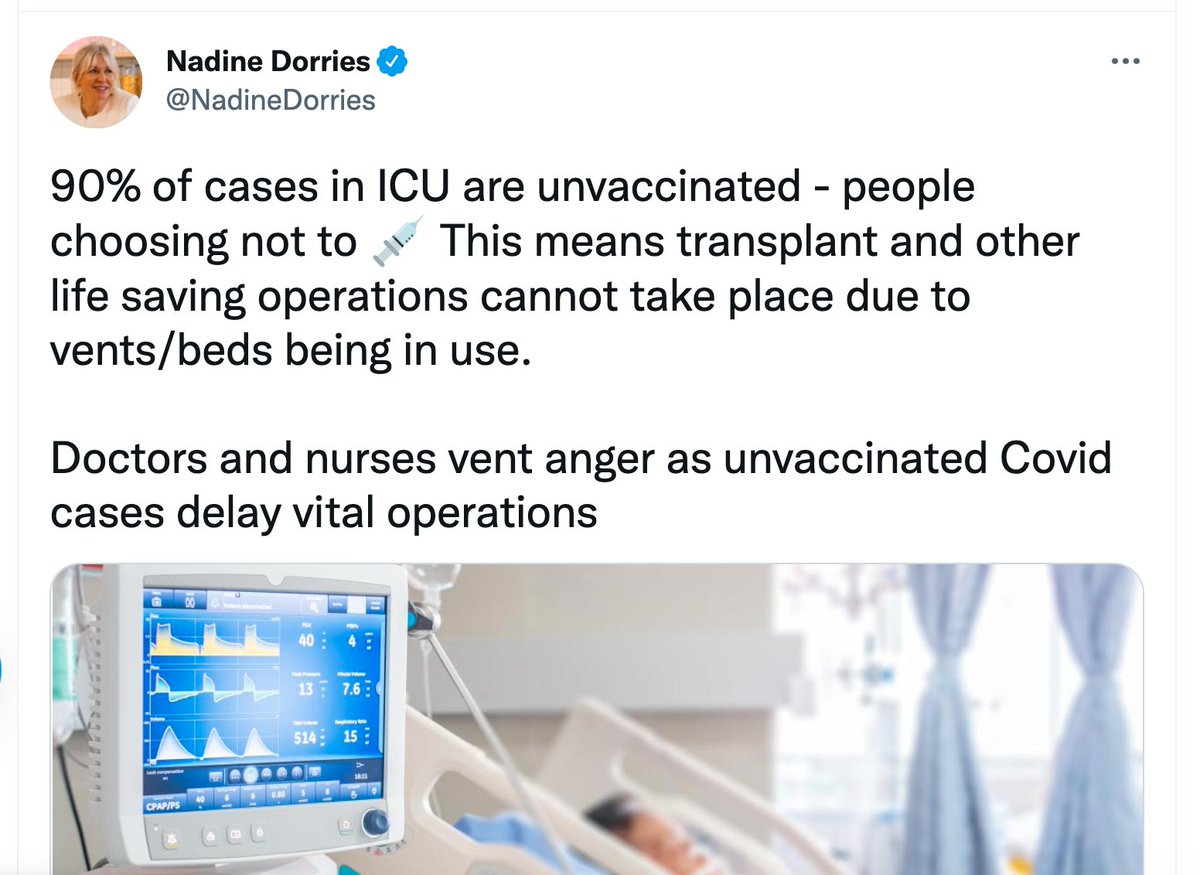
THREAD: Covid Latest
And so, while death rates remain largely decoupled from case rates--i.e., while the condition we were told would avoid the need for restrictions remains fulfilled--, the UK takes another step towards mandatory vaccination.
And so, while death rates remain largely decoupled from case rates--i.e., while the condition we were told would avoid the need for restrictions remains fulfilled--, the UK takes another step towards mandatory vaccination.

Apparently, mandatory vaccination is a ‘conversation’ we’ll soon need to have (like our past conversations about child vaccination).
And, all the while, not a single question with any force or penetrative power is asked by the mainstream media.
And, all the while, not a single question with any force or penetrative power is asked by the mainstream media.
https://twitter.com/calvinrobinson/status/1468684216741376008
I’d therefore like to set out a few questions which I’d be keen if someone (e.g., @TiceRichard, @AndrewRosindell?) could put to the relevant folk.
Q1. If our vaccines will protect us from the Omicron variant, then why are the recently-announced restrictions necessary (restrictions of highly dubious efficacy)?
And if they won’t, then how are booster shots and vaccine passports the answer?
And if they won’t, then how are booster shots and vaccine passports the answer?

Q2. If vaccination puts more pressure on viruses to mutate (per Vallance’s statement below), then how do we ever break out of the present cycle?
‘More vaccination’ means ‘more mutations’ means ‘more need for vaccinations’ means ‘more mutations’ means...
‘More vaccination’ means ‘more mutations’ means ‘more need for vaccinations’ means ‘more mutations’ means...
https://twitter.com/abirballan/status/1468244984210071555
Q3. If the mRNA vax ‘dramatically increases inflammation on the endothelium and T cell infiltration of cardiac muscle’ (per the paper below), then how many times do we think we can go round the above doom loop before it catches up with us?
ahajournals.org/doi/10.1161/ci…
ahajournals.org/doi/10.1161/ci…
Q4. What about the graph below suggests the Omicron variant is of such great concern to us? (Is the picture different elsewhere? If so, please let me know.) 

Q5. If vaccine passports haven’t helped in France, Germany, or Ireland, what makes us think they’ll help here?
Or do we just plan to wait until things improve in those countries and then claim that vaccine passports made the difference?
Or do we just plan to wait until things improve in those countries and then claim that vaccine passports made the difference?

Q6. Why are we constantly misled by the media about the efficacy of vaccines?
Three times in the last week, various folk on Good Morning Britain have told us that 90% of people in hospital with Covid are unvaxxed, as have the papers.
Nadine Dorries has repeated the claim too.
Three times in the last week, various folk on Good Morning Britain have told us that 90% of people in hospital with Covid are unvaxxed, as have the papers.
Nadine Dorries has repeated the claim too.

Statistics are never provided, however, and I can’t see how such claims can be anywhere near accurate.
Overnight admissions to emergency care (within 28 days of a positive test) are provided on p. 31 of the linked report (assets.publishing.service.gov.uk/government/upl…)
Overnight admissions to emergency care (within 28 days of a positive test) are provided on p. 31 of the linked report (assets.publishing.service.gov.uk/government/upl…)

Overall, the unvaxxed make up not 90% of admissions, but 35% of admissions. That’s quite a difference.
The same report also details deaths.
Overall, the unvaxxed make up not 90% of deaths, but 20% of deaths. Again, that’s quite a difference.
Overall, the unvaxxed make up not 90% of deaths, but 20% of deaths. Again, that’s quite a difference.

And, if 90% of ICU beds are occupied by the unvaxxed, how come the unvaxxed only make up 20% of the relevant deaths?
The unvaxxed would need to be 36 times more likely to leave ICU alive than the vaxxed.
The unvaxxed would need to be 36 times more likely to leave ICU alive than the vaxxed.
Can that really be the case? (And if it is, what does it tell us about vaccines?)
And yet we find no shortage of claims such as:
And yet we find no shortage of claims such as:

Q7. Most fundamentally of all, if asymptomatic and pre-symptomatic transmission accounts for only a small percentage of Covid transmission (perhaps between 6 and 12 percent),...
...then why do we think that measures entirely aimed at limiting asymptomatic and pre-symptomatic transmission are the answers to our problems?
Diseases are transmitted by *sick* rather than healthy people.
cdc.gov/mmwr/volumes/6…
Diseases are transmitted by *sick* rather than healthy people.
cdc.gov/mmwr/volumes/6…
• • •
Missing some Tweet in this thread? You can try to
force a refresh







